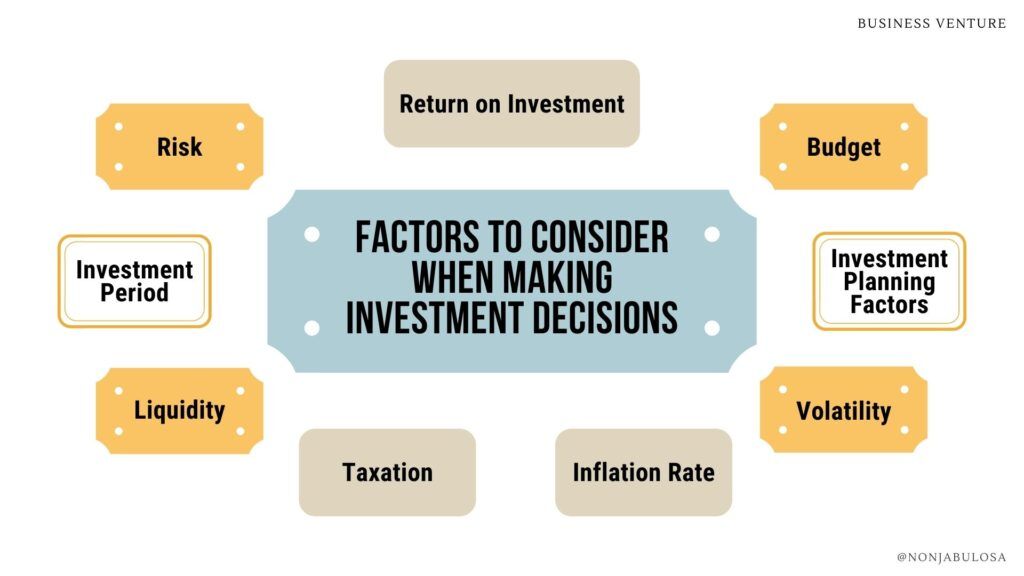The Main Principles Of Amur Capital Management Corporation
The Main Principles Of Amur Capital Management Corporation
Blog Article
Amur Capital Management Corporation Fundamentals Explained
Table of ContentsAmur Capital Management Corporation Can Be Fun For AnyoneThe Best Strategy To Use For Amur Capital Management CorporationIndicators on Amur Capital Management Corporation You Should KnowThe Best Guide To Amur Capital Management CorporationThe Single Strategy To Use For Amur Capital Management CorporationExamine This Report about Amur Capital Management CorporationSee This Report on Amur Capital Management Corporation
That solitary sentence could apply to the task of choosing your investments. Below are some basic concepts any capitalist need to recognize if they desire to boost the effectiveness of their investment option.Offer your money time to grow and compound. Identify your risk tolerance, after that pick the sorts of financial investments that match it. Discover the 5 crucial realities of stock-picking: rewards, P/E proportion, beta, EPS, and historical returns. The Pareto Principle is a helpful principle to keep in mind when starting a task that incorporates a huge quantity of information, such as the subject "just how to pick your financial investments." In many facets of life and knowing, 80% of the results originate from 20% of the initiative.
7 Simple Techniques For Amur Capital Management Corporation
You need to commit to an amount of time throughout which you will leave those investments unblemished. A practical rate of return can be expected only with a long-lasting perspective. When investments have a very long time to value, they're most likely to weather the inevitable ups and downs of the equities market.
One more important factor to leave your financial investments untouched for numerous years is to take advantage of worsening. When you start earning cash on the cash your financial investments have currently made, you're experiencing substance development.
Amur Capital Management Corporation Fundamentals Explained
They get the benefit of worsening development over a longer duration of time. Property appropriation indicates placing your financial investment resources into numerous kinds of financial investments, each standing for a percentage of the entire. Alloting properties into different courses that are not extremely correlated in their cost activity can be an extremely efficient means of expanding risk.
If you intend to diversify your profile even more, you may broaden past those two classes and consist of genuine estate investment company (REITs), products, foreign exchange, or global stocks. To recognize the right appropriation method for you, you need to recognize your tolerance for threat. If momentary losses maintain you awake during the night, focus on lower-risk alternatives like bonds (alternative investment).
Amur Capital Management Corporation for Beginners

Nobel Prize-winning economist Harry Markowitz referred to this incentive as "the only freebie in money - https://www.behance.net/christobaker32. investing for beginners in canada." You will certainly gain extra if you expand your profile. Here's an instance of what Markowitz indicated: An investment of $100 in the S&P 500 in 1970 would certainly have grown to $7,771 by the close of 2013
Now, envision you take on both approaches. If you had actually invested $50 in the S&P 500 and the various other $50 in the S&P GSCI, your total financial investment would have grown to $9,457 over the same duration. This suggests your return would have gone beyond the S&P 500-only portfolio by 20% and be nearly double that of the S&P GSCI performance.
Everything about Amur Capital Management Corporation

Everything else takes very specialized knowledge. If you're an expert on antique Chinese porcelains, go all out. If you're not, you're far better off sticking with the fundamentals. If a lot of financiers can reach their objectives with a combination of supplies and bonds, then the supreme inquiry is, how much of each class should they select? Allow background be an overview.
The truth is, the overall return on stocks historically has actually been much greater than for all various other possession courses. In his publication Stocks for the Long term, writer Jeremy Siegel makes an effective situation for designing a profile consisting dig this mainly of stocks. His rationale: "Over the 210 years I have actually taken a look at supply returns, the genuine return on an extensively diversified profile of stocks has averaged 6. alternative investment.6% per year," Siegel claims
The 20-Second Trick For Amur Capital Management Corporation
"At the end of 2012, the return on small bonds was around 2%," Siegel notes. "The only method that bonds can generate a 7.8% actual return is if the consumer cost index fell by nearly 6% per year over the following 30 years.
Situation in point: At a price of 3% rising cost of living annually, $100,000 will be worth just $40,000 in 30 years. Your age is as pertinent as your individuality. As you obtain closer to retirement, you should take less risks that could endanger your account equilibrium just when you require it.
The Buzz on Amur Capital Management Corporation

In maintaining with the Pareto Principle, we'll consider the five most important facets. The regularity and quantity of the returns are subject to the company's discretion and they are largely driven by the firm's economic efficiency.
Report this page